What Is the Dual GST Model in India? Meaning & Features
- 30 Dec 24
- 9 mins
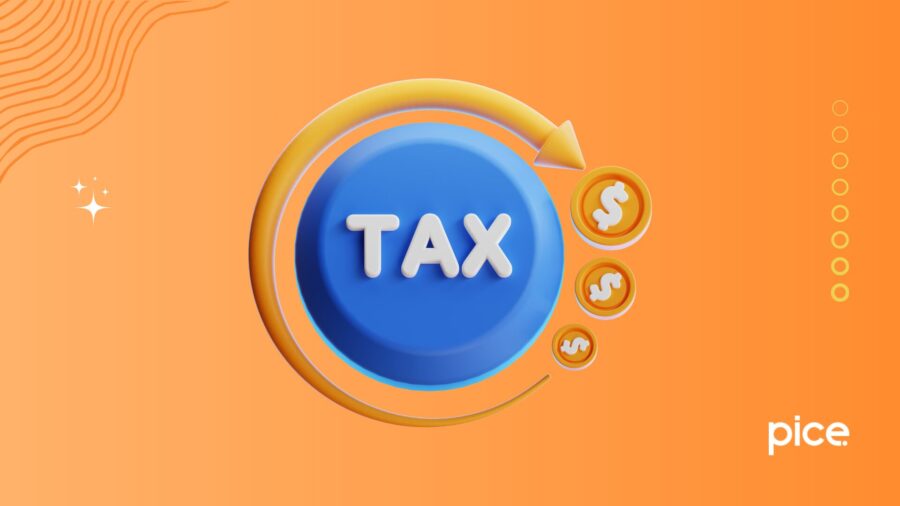
What Is the Dual GST Model in India? Meaning & Features
- What Is the Dual GST Model?
- What Are the Crucial Features of the Dual GST Model?
- What Are the Benefits of the Dual GST Model?
- What Are the Different Types of Dual GST Models?
- What Are the Limitations of the Dual GST Model?
- What Is the Impact and Implications of the Dual GST Model?
- What Is the Impact of Dual GST on Various Sectors?
- Conclusion
Key Takeaways
- The dual GST model unifies central and state taxes, simplifying India's tax structure.
- Businesses gain from input tax credits and reduced cascading taxes under GST.
- GST fosters economic growth by creating a seamless national market.
- Implementation challenges and compliance burdens impact small businesses.
- Sectoral impacts vary, with manufacturing benefiting while agriculture faces complexities.
The dual GST (Goods and Services Tax) system is a unified taxation framework that plays a crucial role in streamlining the tax structure for goods and services. Convenient for India's federal structure, this model divides the authority to collect indirect taxes between the central and state governments.
This dual taxation aim is to create a seamless national market while addressing the cascading effect caused by multiple layers of taxes. To learn more about the dual GST model and other crucial details, go through this blog.
What Is the Dual GST Model?
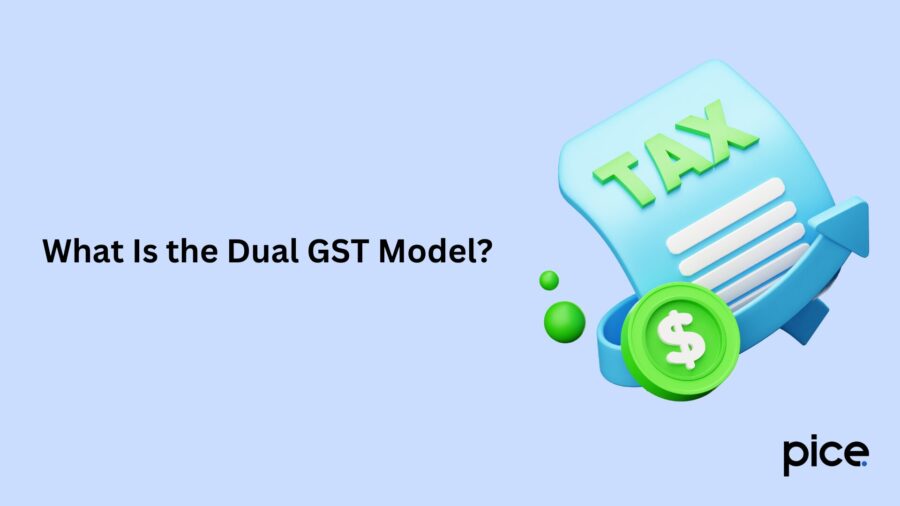
In the dual GST structure, both Central GST (CGST) and the State GST (SGST) apply concurrently on any supply of goods and services, unless exempted or fall into any specific category. Both taxes are imposed on economic activities that take place in a single state only. This tax structure makes it possible for both the centralised government and the state government to share an equal portion of the tax income.
The Central Government levies and collects the amount of CGST, whereas the State Government levies and collects the amount of SGST. This approach makes sure that taxes received by the Central Government are shared by both levels of government to promote synergy.
For example, if a person buys some goods for ₹1,000 within a state the CGST would be ₹90 and SGST would be ₹90 in case of 18% GST on the price. This has eradicated the taxing of one tax on another, a problem seen in the earlier methods of taxation. Understanding this structure is essential for businesses, as it directly impacts pricing strategies and simplifies compliance with tax regulations.
What Are the Crucial Features of the Dual GST Model?
The dual GST model incorporates several features aimed at enhancing efficiency and transparency in the taxation process:
Dual Structure
A key feature of this dual structure is the division of tax authority between the central and state governments, allowing both to impose taxes on goods and services. This also means an equal distribution of tax revenue so as to cover the cost of the service that is provided.
Uniform Tax Rates
The model promotes uniform procedures for tax collection nationwide, simplifying the tax framework and minimising challenges for businesses operating across multiple states.
Input Tax Credit
Many businesses appreciate this model since they are able to recover input tax credit by matching the taxes they paid on inputs with their output tax. This leads to a reduction of total tax charge and eradication of cascading tax impact.
Composition Scheme
The dual GST framework features a composition or compounding scheme that sets a maximum annual turnover limit as well as a floor tax rate and an upper ceiling rate. This scheme provides businesses that fall within a specified revenue limit with greater flexibility.
What Are the Benefits of the Dual GST Model?
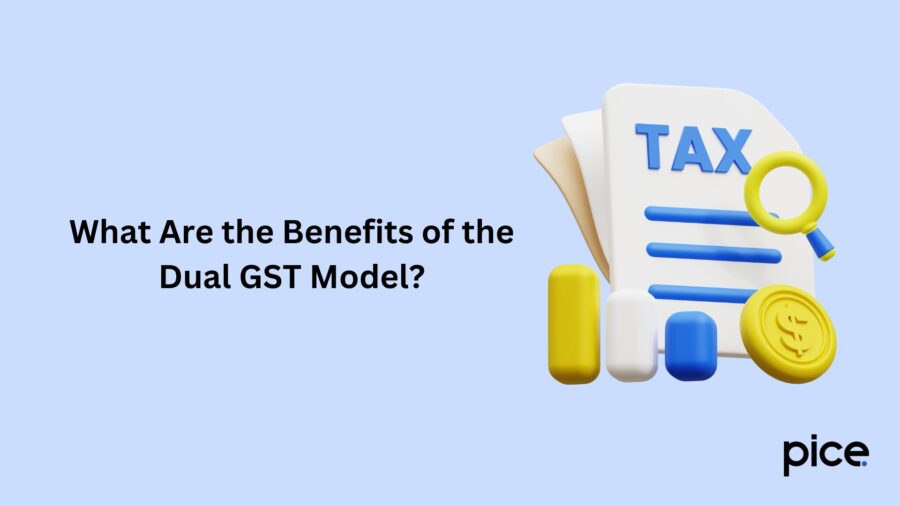
The following are the numerous benefits of the dual GST model:
Simplified Tax Structure
The introduction of the dual tax structure simplified the taxation structure by replacing earlier frameworks. It removed the complexity of multiple taxes levied by state and central governments, creating a more straightforward structure.
Elimination of Tax Cascading
The input tax credit system fixes taxes at the value that is added at the different stages in the production and supply chain. This approach completely erases the rolling down of taxes.
Increased Revenue Collection
Dual GST extends its reach to include the e-commerce sector and the unorganised economy, effectively expanding the tax base. Hence, government tax revenues have gone up through growth that sources extra capital towards the funding of physical capital.
Improved Compliance
Previous tax burdens such as the VAT and the service charges were hence done away with our single tax system when introduced. This change not only minimised or eradicated procedural hassles but was also accompanied by a decrease in the compliance cost by taxpayers.
What Are the Different Types of Dual GST Models?
The following are the different types of dual GST models:
Concurrent Dual GST
This approach allows both the central and state governments to simultaneously impose and collect GST on the same transaction. India follows this model, with CGST and SGST applied together on intra-state supplies.
Exclusive Dual GST
Under this system, either the central or state government has sole authority to impose GST on certain goods and services. This model is less commonly adopted due to the complexities it introduces in managing taxes.
Integrated GST (IGST)
As a part of the dual GST system, IGST applies to inter-state transactions. It ensures the proper distribution of tax revenue between the central and state governments for goods and services that move across state boundaries.
What Are the Limitations of the Dual GST Model?
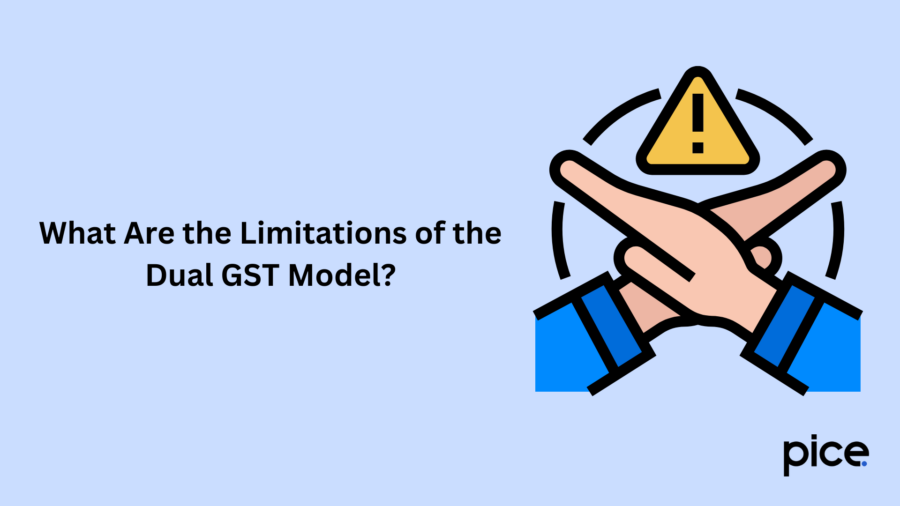
While the dual GST model offers several advantages, it also comes with certain challenges and limitations:
Complexity in Implementation
The coordination of central as well as state governments to facilitate the dual system of taxation is not an easy task, as both governmental layers have to work together closely, and most decisions take time to make.
Compliance Burden on Businesses
Even though it sought to simplify tax collection, companies continue to struggle with tax compliance issues because of constant changes to the tax laws, having to file returns for more than one tax, and the variability of procedures from state to state.
Impact on Small Businesses
Small business entities experience many problems with compliance requirements set by the GST because they often do not possess enough resources and knowledge about the new framework.
Transitional Challenges
Switching from the previous tax system to the GST framework demands considerable adjustments by businesses. This transition can be disruptive and involve significant short-term costs.
What Is the Impact and Implications of the Dual GST Model?
The dual model of GST has the following impact and implications on the Indian economy:
Economic Growth
The dual GST model has facilitated the creation of a unified national market, enhancing trade and commerce across the country. Lower logistics and transaction costs have contributed to improved economic growth.
Increased Transparency
Probably due to the fact that the taxation process has been made much more transparent with the introduction of a powerful IT-based compliance system to check tax compliance, cases of tax evasion and corruption have tremendously dropped.
Consumer Benefits
Eliminating the sequential effect of taxes, GST has relieved the general tax rate on products and services, thus eliminating their burden on the consumer price range.
Challenges in Tax Administration
The dual GST system requires a close coordination between central and state tax authorities. However, sometimes it gets difficult and thus, becomes a hindrance to efficient administration.
What Is the Impact of Dual GST on Various Sectors?
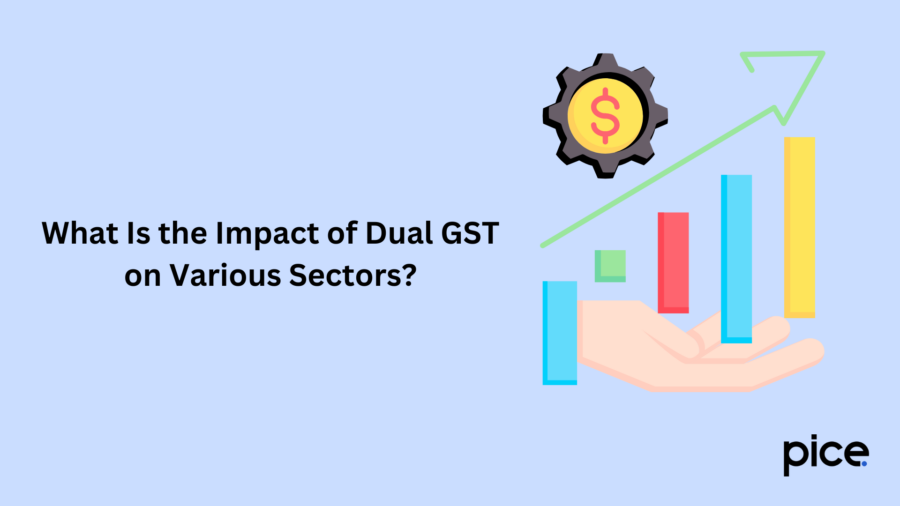
The key impact of taxes under the dual GST model on various sectors have been a mix of positive and negative outcomes, with the long-term effects still evolving. Adjustments and refinements to the system may be needed to optimize its influence on the Indian economy.
Key insights include:
| Sector | Impact |
| Manufacturing | Overall outcome has had a positive impact, with lower supply chain costs and enhanced competitiveness. However, specific industries, such as textiles, encountered short-term hurdles due to increased tax rates. |
| E-commerce | Enhanced by simplified logistics and efficient tax processes, resulting in higher online sales and business expansion. |
| Services | The simplified tax structure and increased formalisation have generally been beneficial. However, the tax on services has been relatively higher in some cases. |
| Agriculture | Difficulties have arisen due to exemptions and the complexities in tax rates applied to agricultural inputs and outputs. |
| Real Estate | An initial decline occurred due to higher tax rates on under-construction properties, but the situation gradually stabilised over time. |
Conclusion
Understanding the roles of CGST and SGST enables businesses to address their tax and financial strategies better. The dual GST model does both the twin objectives of simplification of tax structure and integration of the centre and state revenues.
They kind of signal a new direction with respect to the existing tax regime to make the system amiable, easy to understand, and effective. But the process of actually applying and assuring compliance with the taxes in this system is not without certain difficulties.
💡If you want to streamline your payment and make GST payments, consider using the PICE App. Explore the PICE App today and take your business to new heights.
 By
By 
















